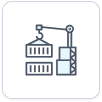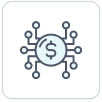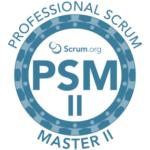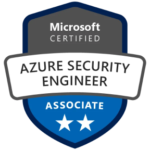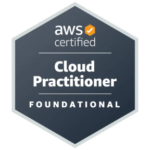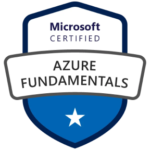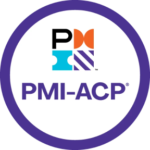Are your business systems running at peak performance, or are there inefficiencies lurking beneath the surface? In today’s technology-driven world, optimizing software systems is crucial for staying competitive.
A thorough software audit can identify areas of improvement, ensure compliance, and enhance overall system performance. This process is vital for businesses aiming to streamline operations and maximize their technology investments.
By understanding the benefits and best practices of Software Auditing Service, businesses can make informed decisions to optimize their systems.
What Is Software Auditing?
Software auditing is a comprehensive examination that assesses software configuration, usage, and licensing to identify areas for improvement. This process is crucial for ensuring that software systems are functioning as intended, are compliant with regulatory requirements, and are optimized for performance.
To understand the significance of software auditing, it’s essential to delve into its definition and importance. Software auditing is not just about checking compliance; it’s a thorough analysis that helps businesses optimize their software systems, reduce costs, and mitigate risks associated with software usage.
Definition and Importance
Software auditing is defined as a systematic examination of software systems to ensure they are operating correctly, efficiently, and in compliance with relevant laws and regulations. The importance of software auditing lies in its ability to help organizations manage their software assets effectively, avoid legal and financial risks, and improve overall IT compliance.
Key aspects of software auditing include:
- Assessing software licenses to ensure compliance with licensing agreements.
- Evaluating system performance to identify areas for optimization.
- Identifying potential risks associated with software usage.
Key Components of Software Auditing
The key components of software auditing are critical to understanding its scope and benefits. These components include:
| Component | Description | Benefits |
|---|
| Software License Management | Ensuring compliance with software licensing agreements. | Avoids legal and financial risks associated with non-compliance. |
| System Performance Evaluation | Assessing software systems for optimal performance. | Improves efficiency and reduces operational costs. |
| Risk Identification | Identifying potential risks associated with software usage. | Mitigates risks and ensures business continuity. |
By understanding these components, businesses can better appreciate the value of software auditing in maintaining efficient, compliant, and optimized software systems.
Benefits of Software Auditing Services
Software auditing services provide a multitude of benefits that can significantly enhance an organization’s software management strategy. By conducting regular software audits, businesses can identify and mitigate potential risks, optimize software performance, and reduce unnecessary costs associated with software licensing and maintenance.
Improved Compliance and Risk Management
One of the primary benefits of software auditing is improved compliance and risk management. Through a thorough compliance assessment, organizations can ensure that their software usage adheres to regulatory requirements and industry standards, thereby reducing the risk of non-compliance and associated penalties.
Effective risk management is crucial in today’s digital landscape. Software auditing services help organizations identify potential vulnerabilities and take proactive measures to mitigate them, ensuring a more secure software environment.
Enhanced Software Performance
Software auditing also leads to enhanced software performance. By analyzing software usage patterns and identifying areas of inefficiency, organizations can optimize their software configurations for better performance. This not only improves user experience but also increases productivity.
The use of audit software tools enables businesses to monitor software performance in real-time, allowing for swift identification and resolution of performance issues.
Cost Savings Over Time
Another significant benefit of software auditing is cost savings over time. By identifying unused or underutilized software licenses, organizations can renegotiate contracts and eliminate unnecessary expenses. Additionally, software audits help in avoiding costly compliance fines and reducing the financial impact of software-related risks.
| Benefit | Description | Impact |
|---|
| Improved Compliance | Ensures adherence to regulatory requirements | Reduced risk of non-compliance penalties |
| Enhanced Software Performance | Optimizes software configurations for better performance | Increased productivity and user satisfaction |
| Cost Savings | Eliminates unnecessary software expenses | Reduced operational costs |
Types of Software Auditing Services
There are several types of software auditing services that cater to different organizational needs. These services are designed to help organizations optimize their software systems, ensure compliance, and improve overall performance.
Internal vs. External Audits
Software audits can be categorized into internal and external audits. Internal audits are conducted by an organization’s own audit team, allowing for continuous monitoring and improvement of software assets. On the other hand, external audits are performed by third-party auditors who bring an objective perspective and specialized expertise.
Internal audits are beneficial for ongoing software management, while external audits provide an unbiased assessment of an organization’s software practices.
Compliance Audits
Compliance audits focus on ensuring that an organization’s software usage complies with regulatory requirements and licensing agreements. This type of audit is crucial for avoiding legal issues and financial penalties associated with non-compliance.
License compliance services are a key component of compliance audits, helping organizations manage their software licenses effectively and maintain adherence to software vendor agreements.
Performance Audits
Performance audits aim to optimize software performance and efficiency. These audits analyze how software is utilized within an organization and identify opportunities for improvement.
By conducting performance audits, organizations can enhance their software asset management practices, leading to better resource allocation and improved overall performance.

The following table summarizes the key differences between the types of software auditing services:
| Type of Audit | Focus | Benefits |
|---|
| Internal Audits | Ongoing monitoring by internal team | Continuous improvement, better software management |
| External Audits | Objective assessment by third-party auditors | Unbiased evaluation, specialized expertise |
| Compliance Audits | Ensuring regulatory and licensing compliance | Avoidance of legal issues, financial penalties |
| Performance Audits | Optimizing software performance and efficiency | Improved resource allocation, enhanced performance |
The Software Auditing Process
To ensure effective software management, it’s essential to grasp the software auditing process, which involves several critical steps. A well-structured SAM audit process helps organizations identify areas for improvement, optimize software usage, and reduce potential risks.
Initial Assessment
The initial assessment phase is crucial in determining the scope and objectives of the audit solution. This involves identifying the software applications to be audited, understanding the current software management practices, and defining the goals of the audit. By doing so, organizations can ensure that the audit is focused and effective.
During this phase, auditors typically review existing software documentation, interview key stakeholders, and assess the current state of software management within the organization. This information is vital in shaping the audit plan and ensuring that it meets the organization’s specific needs.
Data Collection Techniques
Data collection is a critical component of the software auditing process. Auditors use various techniques to gather relevant data, including reviewing software licenses, contracts, and usage reports. They may also conduct interviews with IT staff and end-users to gain a deeper understanding of software usage patterns and identify potential areas of non-compliance.
Additionally, auditors may employ specialized tools to scan the organization’s IT environment and gather data on software installations, usage, and configurations. This data is then analyzed to identify trends, detect potential issues, and inform the audit findings.
Reporting and Analysis
The final step in the software auditing process involves reporting and analysis. The audit findings are compiled into a comprehensive report that highlights the key discoveries, identifies areas for improvement, and provides recommendations for optimizing software management practices.
The report is designed to be clear, concise, and actionable, enabling organizations to understand the audit findings and implement necessary changes. By doing so, organizations can improve their software management practices, reduce costs, and minimize the risk of non-compliance.
Choosing the Right Software Auditing Service
With numerous software auditing services available, choosing the right one requires careful consideration of several key factors. Organizations must navigate through various options to find a service that aligns with their specific needs and goals.
Factors to Consider When Selecting a Service
When evaluating a software auditing service, several factors come into play. These include:
- Expertise and Experience: The service provider’s background in software auditing is crucial. Look for a proven track record and extensive experience in handling similar projects.
- Methodology and Approach: Understand the service’s auditing methodology and how it aligns with your organization’s requirements. A tailored approach is often more effective than a one-size-fits-all solution.
- Reputation and References: Research the service provider’s reputation in the industry. Client testimonials and case studies can provide valuable insights into their capabilities and reliability.
By carefully considering these factors, organizations can make an informed decision when selecting a software auditing service.
Evaluating Credentials and Experience
Evaluating the credentials and experience of a software auditing service is a critical step in the selection process. Here are some key considerations:
- Certifications and Qualifications: Check if the service providers hold relevant certifications and qualifications in software auditing. This ensures they are equipped with the latest knowledge and best practices.
- Past Projects and Success Stories: Review the service’s past projects and success stories. This can provide insights into their expertise and ability to deliver results.
- Industry Specialization: Consider whether the service has experience in your specific industry. Industry-specific knowledge can be a significant advantage in understanding unique challenges and requirements.
By thoroughly evaluating these aspects, organizations can confidently choose a software auditing service that meets their needs and contributes to their success.
Common Challenges in Software Auditing
Software auditing, while beneficial, comes with its own set of challenges that organizations must navigate. Ensuring the success of a software audit requires understanding these challenges and preparing accordingly.
The process involves several key areas where difficulties may arise. Two significant challenges are data privacy concerns and resource allocation issues.
Data Privacy Concerns
One of the paramount challenges in software auditing is maintaining the privacy and security of sensitive data. During the audit process, access to confidential information is often necessary, which raises concerns about data protection. To mitigate these risks, organizations must implement robust data security measures, such as:
- Encrypting sensitive data
- Restricting access to authorized personnel
- Using secure communication channels
By taking these precautions, organizations can minimize the risk of data breaches during the software audit process.
Resource Allocation Issues
Another significant challenge is allocating sufficient resources for the software audit. This includes not only financial resources but also personnel and time. Organizations must ensure that they have the necessary expertise and capacity to conduct a thorough audit. Effective resource allocation involves:
- Assigning experienced personnel to the audit team
- Allocating sufficient time for the audit process
- Budgeting appropriately for audit-related expenses
By addressing these resource allocation issues, organizations can ensure that their software audit is comprehensive and effective.

In conclusion, while software auditing presents several challenges, understanding and addressing these issues can help organizations navigate the process more effectively. By prioritizing data privacy and resource allocation, organizations can ensure a successful software audit that optimizes their systems and improves overall performance.
Best Practices for Successful Software Audits
To achieve successful software audits, organizations must adopt certain best practices. These practices not only ensure compliance with regulatory requirements but also optimize software performance. By implementing these best practices, organizations can maximize the benefits of software auditing.
Regularly Scheduled Audits
Regularly scheduled audits are essential for maintaining ongoing compliance and optimization. By conducting audits at regular intervals, organizations can identify and address issues before they become major problems.
Involving Key Stakeholders
Involving key stakeholders in the audit process ensures that all relevant perspectives are considered. This helps in making informed decisions and implementing necessary changes effectively.
Involving stakeholders from different departments can provide a comprehensive view of the software systems in use. This collaborative approach enhances the audit’s effectiveness. Moreover, regularly scheduled audits help in maintaining IT compliance, reducing the risk of non-compliance.
By adopting best practices such as regularly scheduled audits and stakeholder involvement, organizations can ensure the success of their software audits. This not only improves IT compliance but also optimizes software performance.
How Software Auditing Enhances Security
By leveraging audit software tools, organizations can significantly improve their software security posture. Software auditing is a comprehensive process that not only identifies potential vulnerabilities but also ensures the overall integrity of the software system.
One of the primary ways software auditing enhances security is through the identification of vulnerabilities. This involves a thorough examination of the software system to detect any weaknesses or potential entry points that could be exploited by malicious actors. Vulnerability assessment is a critical component of this process, enabling organizations to proactively address security risks.
Identifying Vulnerabilities
Identifying vulnerabilities is a crucial step in the software auditing process. It involves using various audit software tools to scan the system for potential weaknesses, such as outdated software, misconfigured systems, or coding errors. By identifying these vulnerabilities, organizations can take corrective action to mitigate risks and prevent potential security breaches.
The process of identifying vulnerabilities is not a one-time task but rather an ongoing effort. As new threats emerge and software evolves, continuous monitoring and auditing are necessary to ensure that the software system remains secure.
Ensuring Data Integrity
Ensuring data integrity is another vital aspect of software auditing. Data integrity refers to the accuracy, completeness, and consistency of data within the software system. Data validation and verification processes are essential in ensuring that the data stored and processed by the software is reliable and trustworthy.
Through software auditing, organizations can implement robust data integrity measures, such as regular data backups, data encryption, and access controls. These measures not only protect the data from unauthorized access or corruption but also ensure compliance with relevant data protection regulations.
By enhancing security through software auditing, organizations can protect their software systems and data from potential threats, thereby safeguarding their reputation and maintaining the trust of their customers and stakeholders.
Case Studies: Successful Software Audits
Examining real-world examples of successful software audits reveals the tangible benefits these assessments can bring to an organization. By analyzing specific case studies, we can gain a deeper understanding of how software audits contribute to improved compliance and cost savings.
Software audits are instrumental in helping organizations optimize their software usage and ensure compliance with licensing agreements. The following examples illustrate the positive impact of these audits.
Improved Compliance
A notable example of a successful software audit is a mid-sized financial services company that engaged in license compliance services to review its software licensing agreements. The audit identified several discrepancies between the company’s software usage and its licensing agreements, allowing the company to rectify these issues and avoid potential legal and financial repercussions.
Through this process, the company not only ensured compliance with software licensing but also optimized its software portfolio, eliminating unnecessary licenses and reducing future audit risks.
Cost Reduction
Another compelling case study involves a large manufacturing firm that conducted a comprehensive software audit to assess its software usage and licensing compliance. The audit revealed opportunities to consolidate software licenses, eliminate unused software, and renegotiate licensing agreements with vendors.
As a result, the company achieved significant cost savings by reducing its software expenditure and streamlining its IT assets. This example demonstrates how software audits can directly impact an organization’s bottom line by identifying areas of inefficiency and opportunities for cost reduction.
These case studies underscore the value of software audits in enhancing organizational efficiency, ensuring compliance, and reducing costs. By leveraging license compliance services, organizations can achieve these benefits and maintain a competitive edge in their respective markets.
Future of Software Auditing Services
The future of software auditing services is poised to undergo significant transformations driven by emerging trends and technological advancements. As organizations increasingly rely on software solutions, the need for effective software auditing will continue to grow.
Software asset management is becoming a critical component of software auditing, enabling organizations to optimize their software investments and minimize risks. The integration of advanced technologies such as artificial intelligence and machine learning is enhancing the efficiency and effectiveness of software audits.
Trends to Watch
Several trends are expected to shape the future of software auditing services. These include:
- Increased adoption of cloud-based services, requiring auditors to adapt to new audit methodologies and tools.
- Growing importance of software asset management, driving the need for more sophisticated audit practices.
- Rising demand for real-time auditing capabilities, enabled by advancements in technologies like AI and ML.
Table: Emerging Trends in Software Auditing
| Trend | Description | Impact on Software Auditing |
|---|
| Cloud Adoption | Increased migration to cloud-based services | New audit methodologies and tools required |
| Software Asset Management | Growing importance of optimizing software investments | More sophisticated audit practices needed |
| Real-time Auditing | Rising demand for immediate audit insights | Enabled by AI and ML technologies |
Technological Advancements
Technological advancements are playing a crucial role in shaping the future of software auditing. The use of AI and ML is automating many audit tasks, improving accuracy, and enabling real-time insights.
As these technologies continue to evolve, we can expect software auditing services to become even more efficient and effective. Organizations that embrace these advancements will be better positioned to optimize their software investments and minimize risks.















































